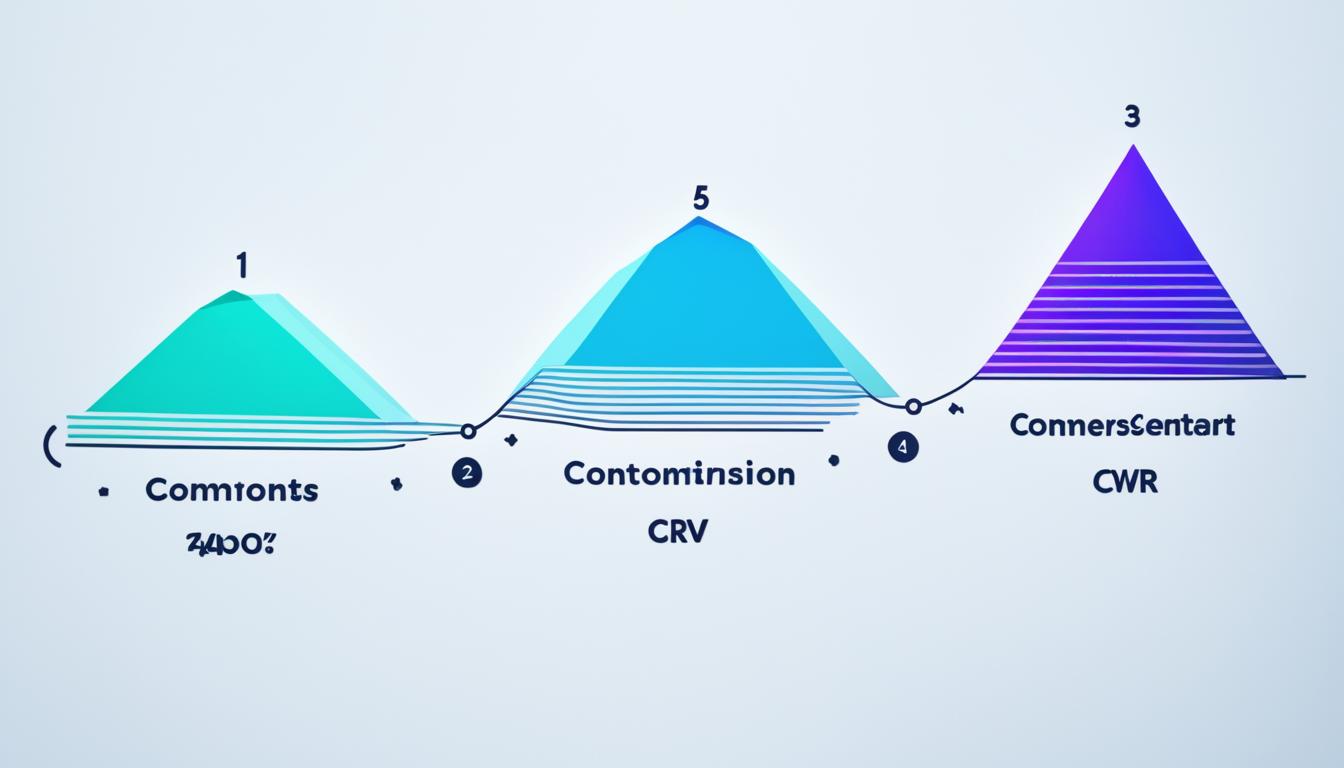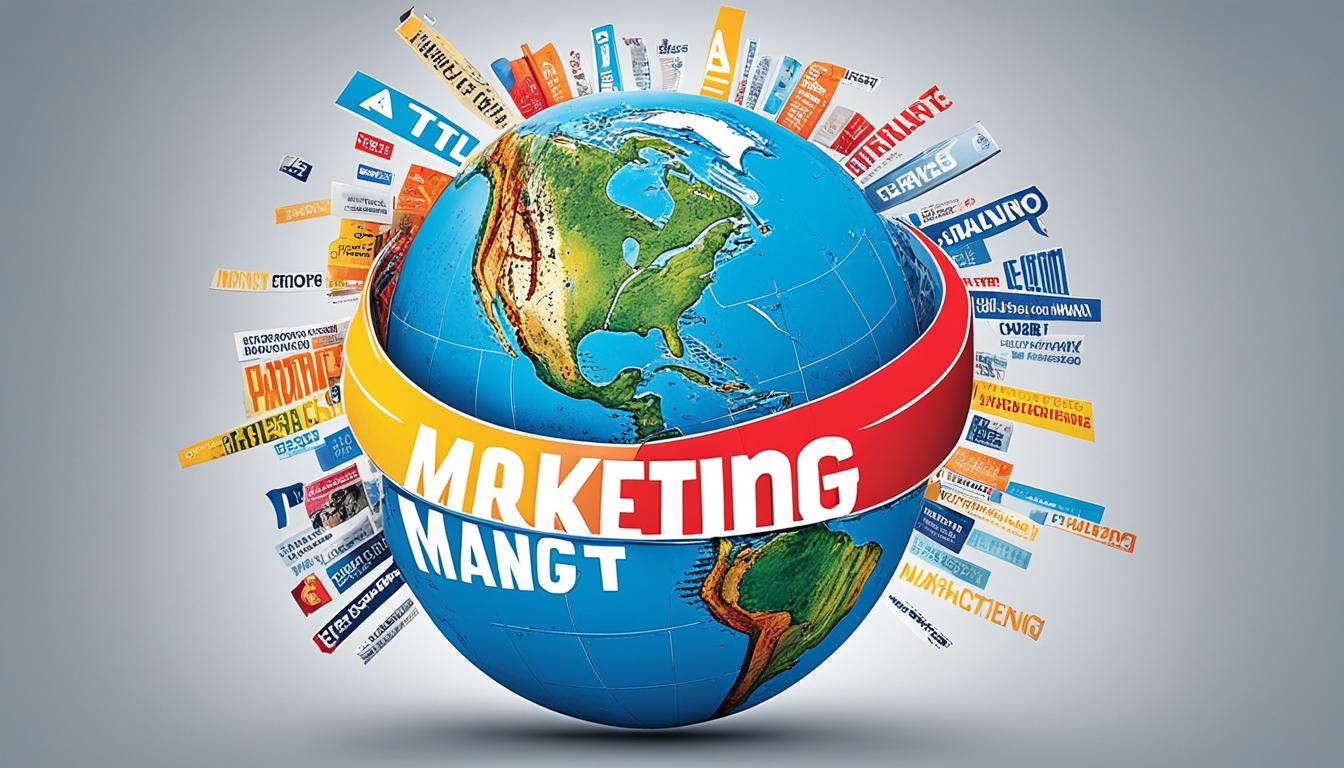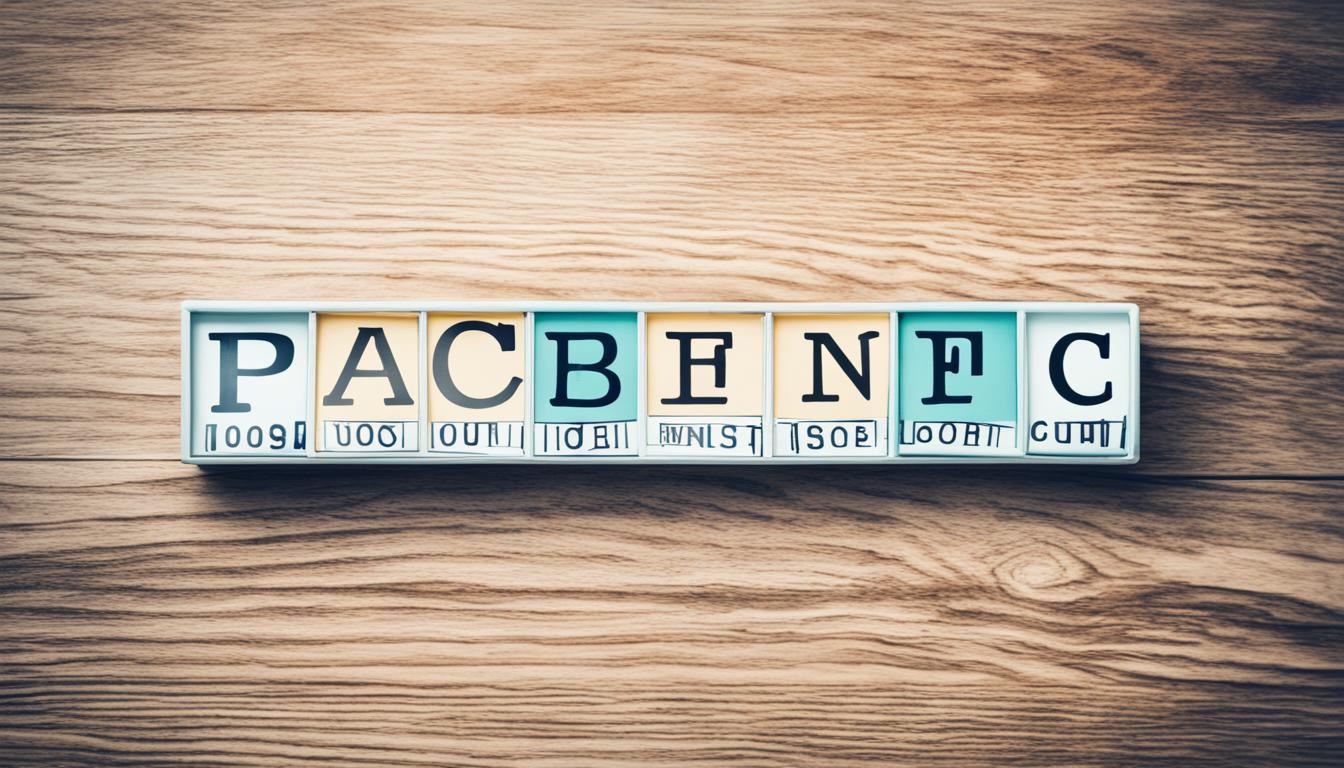Cause marketing is a strong blend of social duty and brand purpose. It’s where companies and nonprofits work together for mutual gain. Through it, businesses link up with social causes to bring about positive change while boosting their own image and customer loyalty.
Nowadays, people prefer companies that care about ethics and the environment. A whopping 70% of consumers are curious about brands’ efforts in social and environmental realms. Cause marketing lets brands show their commitment to change, attracting consumers who care about these values.
With cause marketing, companies can attract new leads and build trust and loyalty among customers. It sets a brand apart from its rivals. By showing deep corporate social responsibility, businesses can win the hearts of ethically minded consumers.
Key Takeaways:
- Cause marketing involves collaboration between for-profit businesses and nonprofit organizations for a common benefit.
- Brands use cause marketing campaigns to showcase their commitment to social responsibility and ethical consumerism.
- Successful cause marketing campaigns generate new leads, create customer loyalty, and differentiate the brand from competitors.
- Consumers expect brands to address social and environmental issues, and cause marketing helps brands meet those expectations.
- Cause marketing campaigns can take various forms, such as partnerships, donations, and point-of-sale campaigns.
What is Cause Marketing?
Cause marketing is a way for businesses to support social issues. They work with nonprofits for mutual benefits. There are many types of cause marketing such as matching gifts and community sponsorships.
This approach makes businesses look good and builds customer loyalty. It shows they care about making a positive impact.
Cause marketing must match a company’s and its customers’ values. This makes the campaigns genuine and more engaging. Businesses can support causes with money, products, volunteer work, or marketing.
For success, engaging with the audience is key. Using social media, web pages, and personal messages helps. This builds strong connections with customers and partners.
Working closely with the nonprofit partner is important too. Together, they can make campaigns that help both sides.
Ultimately, cause marketing lets businesses do good while meeting their goals. It connects brands with causes and supports important social changes.
Marketing Plan Template
Having a marketing plan is vital for cause marketing. A template can guide ensuring all key parts are covered well.
| Key Components of a Marketing Plan Template |
|---|
| 1. Target audience analysis |
| 2. Campaign goals and objectives |
| 3. Nonprofit partner selection |
| 4. Cause alignment with company values |
| 5. Contribution strategy (monetary, in-kind, volunteerism) |
| 6. Messaging and communication plan |
| 7. Campaign timeline and milestones |
| 8. Budget allocation |
| 9. Performance measurement and metrics |
By using a marketing plan template, businesses can address all areas of a cause marketing campaign. This makes their strategy cohesive and successful.
Successful Cause Marketing Examples
Cause marketing has many great examples that show how businesses and nonprofits work together. These partnerships help society and benefit both groups. Here are some outstanding examples of cause marketing:
Yoplait and the Susan G. Komen Foundation
Yoplait and the Susan G. Komen Foundation teamed up for a standout cause marketing effort. They used pink yogurt lids to fund breast cancer research. When customers bought yogurts with pink lids, they helped fight breast cancer while enjoying their snack.
Red Nose Day and Walgreens
Red Nose Day and Walgreens created a meaningful campaign to help kids in need. By selling red noses and items, some money went to help children living in poverty. This partnership shows how simple acts can support important causes.
Warby Parker and VisionSpring
Warby Parker works with VisionSpring on the “Buy a Pair, Give a Pair” project. For every pair sold, they donate one to someone in need. They also provide free vision tests to help even more people, in partnership with VisionSpring.
Arby’s “PurposeFULL” Campaign
Arby’s “PurposeFULL” campaign supports Share Our Strength. Each meal sold means more children in America get to eat. It’s a great example of how routine business can help feed hungry kids.
These stories show the variety of ways companies can engage in cause marketing. It’s more than just giving money. Companies also match donations, volunteer, and support nonprofits. CSR platforms can help manage these activities.
By getting involved in cause marketing, companies do good for society and improve their brand. Partnering with causes that match their values helps businesses make a real difference. It also helps them meet their marketing objectives.
Light the Night – A Custom Matching Gift Campaign
The Light the Night campaign brings the Leukemia & Lymphoma Society (LLS) together with the Danaher Corporation. The goal is for Danaher to host a program that matches employee donations dollar-for-dollar. This not only supports LLS but also inspires more workers to give.
This partnership has grown into Danaher’s standard program for aiding multiple nonprofit causes. LLS has also improved its fundraising by using matching gift automation. This makes everything more efficient.
| Light the Night Campaign | Partners |
|---|---|
| Leukemia & Lymphoma Society (LLS) | Danaher Corporation |
| Matching Gift Program | Hosted by Danaher Corporation |
| Donations | Matched dollar-for-dollar by Danaher Corporation |
| Benefits | Establishment of a standard matching gift program at Danaher Corporation |
| Fundraising Strategy | LLS leverages matching gift automation |
Red Kettle Campaign – Embracing Digital Donations
The Salvation Army’s Red Kettle campaign is a sign of holiday giving. It mainly depended on cash gifts from kind people. To keep up with the shift to digital and reach more people, they joined forces with DipJar, a cashless donation leader.
They set up DipJars next to registers in stores, making it easy for shoppers to donate using credit cards. This new method helped the Red Kettle campaign grow. Now, more people could support The Salvation Army’s work without needing cash.
The Salvation Army made their fundraising modern by using the DipJar system. This let people give to the Red Kettle campaign with their credit cards. It served today’s donors well and backed a cause they value.
Putting DipJars in stores proved how technology and cause marketing can work together to boost donations. The Salvation Army’s move to digital with the Red Kettle campaign shows how vital it is to use new tech. This helps make charity efforts more effective.
Benefits of Cashless Donations
- Convenience for donors who may not carry cash
- Expanded reach and accessibility of the Red Kettle campaign
- Increased donation amounts through credit card transactions
- Enhanced data collection and donor tracking
- Opportunity to engage younger, tech-savvy donors
| Red Kettle Campaign | DipJar Partnership |
|---|---|
| Traditionally reliant on cash donations | Embraced cashless donations |
| Limitations on donor reach | Expanded audience and donor base |
| Restricted by the availability of physical red kettles | Accessible at DipJar locations |
| Challenges in tracking and analyzing donation data | Enhanced data collection and analysis |
100% for the Planet – Committing to Environmental Causes
The 100% for the Planet campaign calls on businesses to donate 1% of their sales to environmental causes. This cause marketing initiative supports environmental sustainability and corporate giving. By joining, companies become part of a worldwide network dedicated to protecting the planet. They show their commitment to sustainability and stand out as eco-friendly brands.
Today, the urgency for environmental action is clear. Businesses play a crucial role in making a difference. The 100% for the Planet campaign is a way for them to show their commitment to environmental sustainability. It also helps preserve our planet for those who come after us.
Why Committing to Environmental Causes Matters
Joining the 100% for the Planet campaign lets businesses meet their corporate responsibility. It also boosts their brand and customer loyalty. People nowadays look for companies that care about the environment. They prefer those that practice sustainability.
By giving to environmental causes, companies can attract those who are environmentally aware. Being part of the 100% for the Planet campaign sets them apart from rivals. It puts them at the forefront of environmental sustainability.
The Benefits of Partnering for Environmental Sustainability
Working with environmental groups offers many advantages. First, it lets businesses use the expertise of these groups for their environmental projects.
Such partnerships can also make a business seem more credible. They show everyone that the company is serious about sustainability. It shows they want to make a positive impact.
Moreover, the 100% for the Planet campaign gives companies access to a global network. This network fosters collaboration and sharing. Together, they can have a bigger impact on the environment.
Corporate Giving and Environmental Sustainability
| Benefits of Corporate Giving |
Benefits of Environmental Sustainability |
|---|---|
| Enhances Corporate Image and Reputation | Promotes Positive Brand Association |
| Drives Customer Loyalty and Engagement | Attracts Environmentally Conscious Consumers |
| Fosters Employee Engagement and Morale | Aligns Business with the Emerging Sustainable Market |
| Builds Strong Community Relationships | Contributes to Preserving the Planet for Future Generations |
Source: Adapted from “Corporate Giving and Sustainability: A Win-Win Strategy”
Businesses can make a real difference through corporate giving and eco-friendly actions. The 100% for the Planet campaign provides a strong way to act and impact the environment positively.
Promotions That Give Back – Community Sponsorships
Promotions That Give Back help businesses support local groups. By backing local events, groups, or causes, companies can boost their brand. At the same time, they help their communities and earn customer loyalty. These sponsorships can be money, donations, or helping out in local projects.
When a business helps its community, it looks good and connects better with people. Showing you care about social issues enhances your brand. Partnering with causes your customers care about can also improve loyalty.
These partnerships help businesses truly connect with their communities. This can build trust and make your brand more memorable.
Moreover, getting involved in community events can inspire others. It shows your brand’s commitment to positive change. And it encourages more people and businesses to help their communities too.
Community sponsorships are good for both businesses and the people around them. Companies get noticed more and earn customer trust. Communities get the support they need.
Benefits of Community Sponsorships:
- Enhanced brand awareness
- Increased customer loyalty
- Positive brand image and reputation
- Opportunity to align with customer values
- Establishment of strong community relationships
- Encouragement of social change and community participation
Through community sponsorships, businesses can change lives and society. It’s important for companies to choose sponsorships that match their values. This ensures a meaningful partnership.
| Business | Community Sponsorship | Impact |
|---|---|---|
| ABC Company | Annual charity run | Raised funds for a local healthcare organization |
| XYZ Corporation | Sponsorship of a youth education program | Provided educational resources to underprivileged students |
| 123 Enterprises | Support for a local animal shelter | Assisted in animal care and adoption efforts |
There are many ways businesses can support their communities. From charity events to educational programs or local causes, each sponsorship makes a big difference.
Buy a Pair, Give a Pair – Supporting Social Causes with Product Purchases
The Buy a Pair, Give a Pair campaign is a buy one give one (BOGO) cause marketing initiative. It lets people help social causes by buying products. For every product bought, a similar one is donated to someone in need. This campaign underlines how important it is to give back, letting customers drive meaningful change.
Joining the Buy a Pair, Give a Pair campaign, customers don’t just get something they want. They also turn into forces for good. Just buying a pair of products can help another person. It’s a chance to match your shopping with your values, setting off a wave of good.
This campaign doesn’t just provide needed help; it also makes more people aware of social issues. Customers become spokespeople for the cause, encouraging others to get involved. This kickstarts a lasting cycle of help and awareness.
Companies adopting the Buy a Pair, Give a Pair model show they’re serious about helping others. They use sales to make a difference, lifting their brand above others. This draws customers who want to shop with a purpose, favoring businesses that look beyond profits.
With this campaign, businesses and shoppers fuel social change together. Buying a pair of products stands as a sign of support and unity. It’s a concrete way for everyone to support what they care about, making a real difference in lives.
The Buy a Pair, Give a Pair campaign lets shoppers make a purchase statement. They directly improve others’ lives, remembering we all have the power to effect change, one pair at a time.
PurposeFULL – Point-of-Sale Campaign
Arby’s PurposeFULL campaign is an impactful cause marketing move. It supports Share Our Strength by asking customers to donate $1 when they buy a product. This donation helps provide meals to those in need. Thanks to this, over $15 million has been raised, showing how successful such campaigns can be.
It’s easy for customers to donate at the point of sale, which helps businesses like Arby’s make a big difference. The PurposeFULL campaign is a perfect example of how companies can make a positive impact. They do this by getting customers involved in important causes.
Starting a point-of-sale cause marketing campaign helps businesses use their customer base for fundraising. Arby’s works with Share Our Strength to fight childhood hunger. This shows Arby’s dedication to making children’s lives better across America.
Soar With Reading – Promoting Literacy and Education
Soar With Reading is a campaign that helps kids read. It gets companies, groups, and people in the community to work together. Their goal is to give kids free books and help them learn.
This effort makes sure kids have books and materials to read. It helps them love reading and learning.
When companies support learning, they help the community grow. Soar With Reading shows how giving back can change kids’ lives. Thanks to this campaign, kids get what they need to do better in school and learn more.
Conclusion
Cause marketing is a strong strategy for pairing businesses with social causes. It lets brands help society while improving their profit. By teaming up with nonprofits, companies can launch meaningful campaigns. These can span from matching gifts to sponsoring products, all aimed at making a difference.
In the world of business, giving back is key. This approach helps build a positive brand image and loyalty among customers. Engaging in cause marketing lets a company show its commitment to social issues. It not only brings goodwill but also strengthens ties with customers who care about corporate responsibility.
The collaboration between Yoplait and the Susan G. Komen Foundation is a prime example. So is Arby’s PurposeFULL campaign. These cases prove that cause marketing can lead to impactful campaigns. They show how businesses can truly benefit while contributing to the greater good.
FAQ
What is Cause Marketing?
Why should businesses engage in Cause Marketing?
What are some successful Cause Marketing examples?
How can businesses implement Cause Marketing?
What is the Light the Night campaign?
How does the Red Kettle campaign embrace digital donations?
What is the 100% for the Planet campaign?
How do Promotions That Give Back work?
What is the Buy a Pair, Give a Pair campaign?
How does the PurposeFULL campaign work?
FAQ
What is Cause Marketing?
Cause marketing lets businesses support social issues or beliefs. They work with nonprofits for mutual benefits.
Why should businesses engage in Cause Marketing?
Cause marketing makes a business look good and responsible. It improves how people see the brand. It also builds customer loyalty and sets the business apart.
What are some successful Cause Marketing examples?
Successful cases include Yoplait and Susan G. Komen Foundation, Red Nose Day and Walgreens, Arby’s campaign supporting Share Our Strength.
How can businesses implement Cause Marketing?
Businesses can implement it through various methods. These include matching gifts, sales campaigns, sponsorships, and product-based projects.
They should match their values and connect with their audience on social media.
What is the Light the Night campaign?
It’s a partnership between the Leukemia & Lymphoma Society and Danaher Corporation. Danaher matches gifts to support LLS and gets employees involved.
How does the Red Kettle campaign embrace digital donations?
The Salvation Army works with DipJar for credit card donations. DipJars are placed by registers, making it easy to donate without cash.
What is the 100% for the Planet campaign?
This campaign encourages companies to donate 1% of sales to the environment. It shows a business’s commitment to the planet and sustainability.
How do Promotions That Give Back work?
These are community sponsorships by businesses. They support local events or organizations, raising brand awareness and customer loyalty.
What is the Buy a Pair, Give a Pair campaign?
It’s a BOGO cause marketing effort. When a customer buys a product, another is donated to someone in need. Customers support social causes with their purchases.
How does the PurposeFULL campaign work?
In Arby’s campaign, customers donate
FAQ
What is Cause Marketing?
Cause marketing lets businesses support social issues or beliefs. They work with nonprofits for mutual benefits.
Why should businesses engage in Cause Marketing?
Cause marketing makes a business look good and responsible. It improves how people see the brand. It also builds customer loyalty and sets the business apart.
What are some successful Cause Marketing examples?
Successful cases include Yoplait and Susan G. Komen Foundation, Red Nose Day and Walgreens, Arby’s campaign supporting Share Our Strength.
How can businesses implement Cause Marketing?
Businesses can implement it through various methods. These include matching gifts, sales campaigns, sponsorships, and product-based projects.
They should match their values and connect with their audience on social media.
What is the Light the Night campaign?
It’s a partnership between the Leukemia & Lymphoma Society and Danaher Corporation. Danaher matches gifts to support LLS and gets employees involved.
How does the Red Kettle campaign embrace digital donations?
The Salvation Army works with DipJar for credit card donations. DipJars are placed by registers, making it easy to donate without cash.
What is the 100% for the Planet campaign?
This campaign encourages companies to donate 1% of sales to the environment. It shows a business’s commitment to the planet and sustainability.
How do Promotions That Give Back work?
These are community sponsorships by businesses. They support local events or organizations, raising brand awareness and customer loyalty.
What is the Buy a Pair, Give a Pair campaign?
It’s a BOGO cause marketing effort. When a customer buys a product, another is donated to someone in need. Customers support social causes with their purchases.
How does the PurposeFULL campaign work?
In Arby’s campaign, customers donate $1 at purchase. It helps provide meals to those in need. Over $15 million has been raised for Share Our Strength.
What is the Soar With Reading campaign?
This campaign boosts literacy and education. It gets free books and resources to kids, helping them love reading.
at purchase. It helps provide meals to those in need. Over million has been raised for Share Our Strength.
What is the Soar With Reading campaign?
This campaign boosts literacy and education. It gets free books and resources to kids, helping them love reading.




